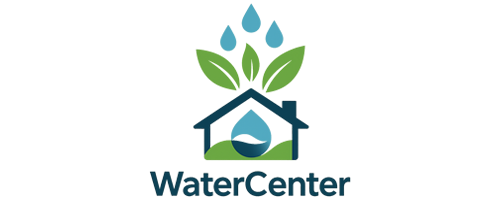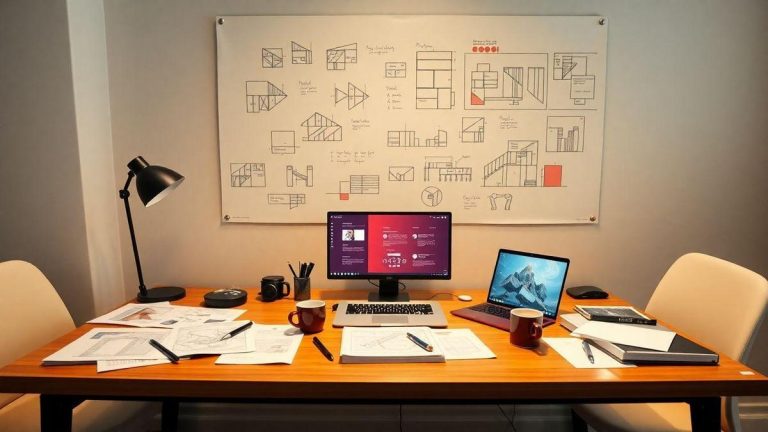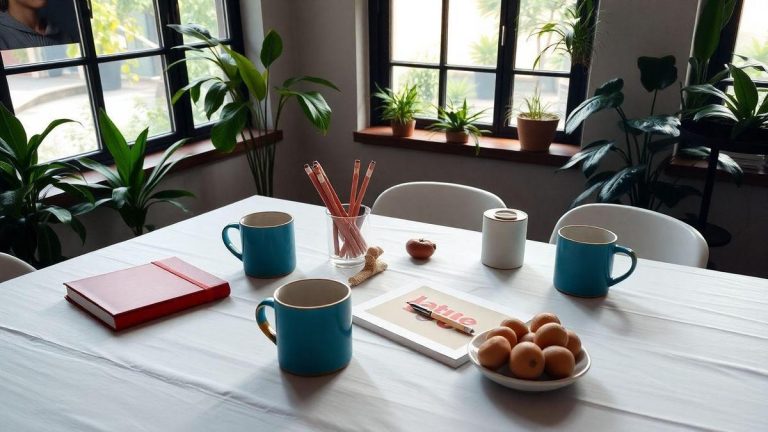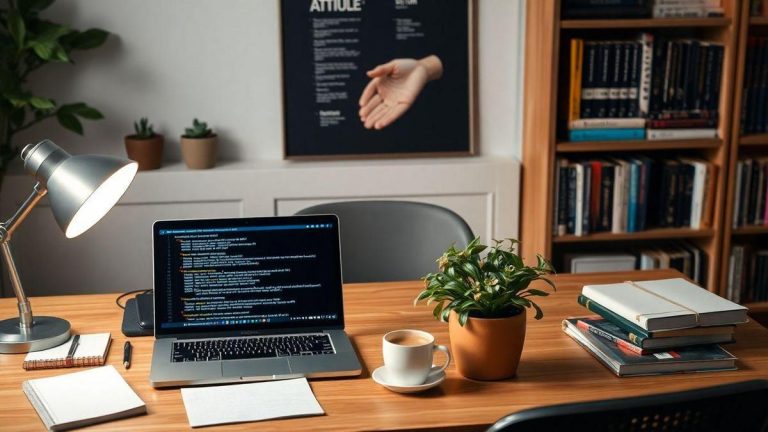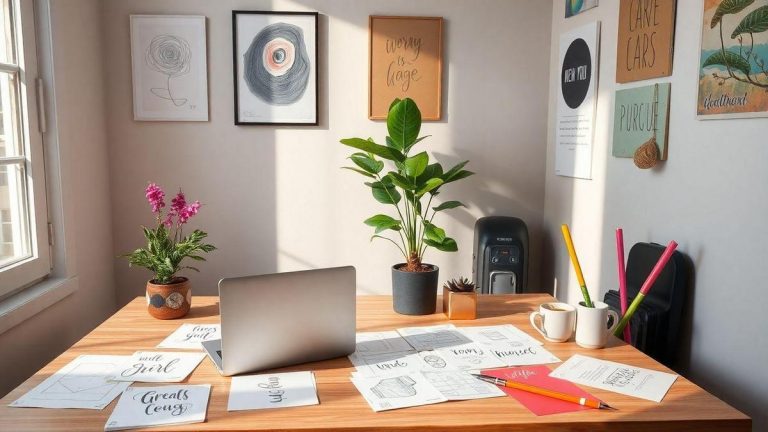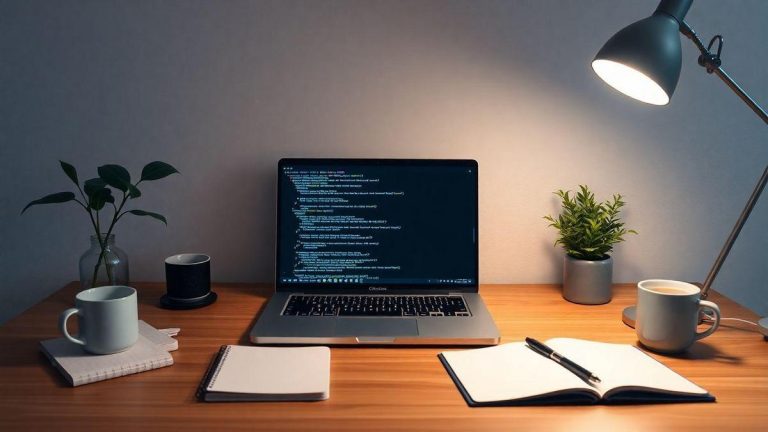From Idea to Code: The Process Behind My Personal Projects
From Idea to Code: The Process Behind My Personal Projects This is how I turn my daydreams into something that actually works. Here, I'll tell you about my adventures made of lines of code and caffeine! I'll share the secrets of my process, tell you how I deal with sluggishness, and turn my accomplishments into fun. Get ready for a tour of crazy ideas, hilarious mistakes, and how combining code and design can be more fun than a bunch of kittens on the internet!
The Magic of the Development Process
How I turn ideas into code
Ah, the magic of development! It's like doing a magic trick, but instead of a rabbit coming out of a hat, I pull code from my brain. When an idea appears, it's like a light bulb goes off. I grab a piece of paper (or my text editor, because who still uses paper these days?) and start scribbling.
First, I write down everything that comes to mind. It could be a brilliant idea or something so crazy it would make Einstein laugh. Then, I organize this mess. I make lists, create diagrams, and sometimes even dance a little to let my creativity flow.
Once the ideas are organized, it's time to codeI choose the language that best suits my project, as if I were choosing an outfit for a party. If it's something more serious, I'll go with Python; if it's something fun, JavaScript is the perfect choice. This way, with each line of code, the idea takes shape. It's like putting together a puzzle, except the puzzle is made of letters and numbers!
What I learned about the development process
The biggest lesson I learned? Patience is the key. Sometimes the code doesn't work the first time. It's like trying to teach a cat to do tricks: you try and try, and in the end, the cat just wants to sleep.
Furthermore, testing is crucial. I created a table with the most common mistakes I made. Take a look:
| Common Mistake | What I Learned |
|---|---|
| Forget semicolons | The code doesn't compile and I'm left staring at the screen like an idiot. |
| Do not test in different browsers | The site works in Chrome, but in Internet Explorer it looks like an alien has invaded. |
| Ignore documentation | Documentation is like a treasure map; without it, I'm lost! |
These small mistakes can waste hours, but each one is a learning opportunity. And with each mistake, I become a better programmer.
Tips for a more fun development process
Now, if you want development to be more fun (and who doesn't?), here are some tips:
- Music: Put on your favorite playlist. The right music can turn any boring task into a party!
- Intervals: Take breaks! Stand up, stretch, and maybe even do a little dance. It helps clear your mind.
- Challenges: Create challenges for yourself. Try to complete a piece of code in less time or add an unusual feature.
- Share: Talk about your projects with friends or in online groups. The feedback can be incredible, and you might even make new friends!
And remember: the most important thing is have fun! The code may be complicated, but the process should be light and full of laughter.
Creative Programming: My Style
What is creative programming for me?
Creative programming, to me, is like making a chocolate cake: you need the right ingredients, but the magic happens when you add your own dash of creativityIt's that moment when a line of code turns into something that makes people say, "Wow, how did you do that?" It's not just about following rules; it's about letting your imagination run wild.
Tools I use to be creative
When it comes to being creative, I have a few tools that are like my best friends in the programming world. Here's a table of my favorites:
| Tool | Description |
|---|---|
| Visual Studio Code | My favorite text editor, full of extensions. |
| Figma | To design interfaces that make your eyes shine. |
| GitHub | Where I store my projects and connect with other creatives. |
| Canva | To create graphics that make my website look better. |
These tools are like superpowers. They help me turn crazy ideas into projects that actually work.
How creativity can improve my code
Creativity is the icing on the cake! When I let my imagination run wild, my code becomes more fun and interactiveFor example, I once created a simple game that used emojis instead of text. People loved it!
Here are some ways creativity improves my code:
- Innovative Solutions: Instead of taking the easy way out, I look for new ways to solve problems.
- Attractive Interface: A good appearance can make any application look amazing.
- User Experience: When I have fun programming, the user also has fun using it.
Creativity is what makes programming an exciting journey and not just a boring job.
Personal Projects: My Digital Adventures
My favorite projects and what I learned from them
Ah, my personal projects! They're like children, but without the diapers and crying. One of my favorites was a recipe website that I created. At first, I just wanted to share my culinary experiences, but I ended up getting into a world of HTML, CSS and a little bit of JavaScriptWhat did I learn? That there's no point in having a beautiful website if the recipes are as good as cardboard. So, I dedicated myself to improving the recipes and, who would have thought, I even gained some followers!
Another project that got me super excited was a technology blogI wanted to be the next great programming guru (or at least the guru in my classroom). What I discovered? That writing about technology is like trying to teach a cat to swim. Cats don't want to know, and readers don't want to know everything either. So I started simplifying things and focusing on what really matters.
| Project | Apprenticeship |
|---|---|
| Recipe Website | The importance of good recipes |
| Technology Blog | Simplify is the key |
How I choose my personal projects
Choosing personal projects is like choosing what to have for breakfast. Sometimes I just want something quick and easy, like a portfolio website. Other times, I feel adventurous and decide to create something more complex, like a online gameThe truth is that I follow some tips:
- Interest: What excites me? If it doesn't excite me, it's not worth it.
- Challenge: A little difficulty is good, but I don't want to feel like I'm trying to climb Everest in flip-flops.
- Time: Can I really dedicate time to this? If not, it's best to let it go.
The impact of personal projects on my career
Personal projects are like the fuel that fuels my professional engine. They help me learn new skills and stand out in the job market. Each project is an opportunity to showcase what I know and what I can do. And, believe me, that makes all the difference!
For example, when I applied for an internship, one of my projects caught the recruiter's attention. He said he loved seeing how I tackled problems and how much fun I had in the process. This made me realize that personal projects aren't just hobbies, but a fundamental part of my life. professional journey.
Project Methodology: My Personal Guide
The methodology I follow for my projects
When it comes to scheduleI'm like a chef who follows a recipe, but with a touch of improvisation. My methodology is very simple: planning, execution and reviewFirst, I plan everything, like a treasure map. Then, I get to work, and finally, I review what I've done. This helps me avoid getting lost in all that code!
Why methodology is important to me
Methodology is like a GPS that guides me through the chaos of my projects. Without it, I'd be more lost than a cat on a rainy day. With a plan, I can organize my ideas and not let myself be carried away by despair when something goes wrong. And believe me, it has gone wrong a lot!
Mistakes I made and how I fixed them
Ah, mistakes! They're like those annoying friends who show up when you least expect them. I once lost hours of work because I didn't make one. backup of my code. Now, I always make backups! Here are some of the mistakes I made and how I fixed them:
| Mistake Made | How I Fixed It |
|---|---|
| Not documenting the code | I started writing clear comments |
| Ignoring feedback from colleagues | I learned to listen and apply suggestions |
| Do not test before delivery | Now I always do rigorous testing |
These little slip-ups taught me a lot, and believe me, each one was a real slap in the face! But, as they say, "nothing ventured, nothing gained," and I'm here to take risks and learn.
Inspiration for Programmers: Where I Look
Sources of inspiration that help me create
When I think about inspiration, the first thing that comes to my mind is Internet. She is like a Pandora's box full of amazing ideas and projects! I often browse sites like GitHub and Dribbble. That's where I see what other programmers are doing and feel like a detective looking for clues for my next project. Plus, I love watching YouTube videos. There's so much cool stuff, I sometimes wonder if programmers are from another planet!
Another source of inspiration that helps me is nature. Yes, I know, it sounds a bit cliché, but listening to the birds chirp while I code is music to my ears. Not to mention that a walk in the park can get my mind flowing like a river, bringing new ideas I never knew existed.
How I use inspiration to improve my projects
Using inspiration is like seasoning a dish. If you don't add the right seasoning, the dish will be bland. When I get inspired, I start sketch ideas. I sketch, create mind maps, and even put on music that matches what I want to create. This helps me visualize the project and understand how each part fits together.
For example, when I was creating a website for a friend, I was inspired by an app I saw. I went there, took some ideas, and made something that was totally different, but still had the essence of what I liked. The result? A site that my friend thought was incredible and that I was incredibly proud of!
The importance of inspiration in programming
Inspiration is like the fuel for the programming engine. Without it, everything feels stagnant and lifeless. I find that when I'm inspired, I code faster and more creatively. It's as if ideas flow like a river on a rainy day!
And that's not all! Inspiration also helps solve problemsWhen I'm facing a bug, sometimes an idea that comes out of nowhere helps me find the solution. It's like my mind is in a puzzle game, and the right piece appears at just the right time.
| Source of Inspiration | How to Use |
|---|---|
| Internet | I browse and search for ideas |
| Nature | I take walks to clear my mind |
| Music | I create playlists that match the project |
Code and Design: The Dynamic Duo
How I combine code and design in my projects
When I think about code and design, I imagine a dancing couple. One is the programmer, who writes lines of code as if he were creating a choreography. The other is the designer, which brings beauty and aesthetics to the presentation. Together, they make the party happen!
In my projects, I always try to make this dance work. For example, when I'm creating a website, I start by thinking about user experienceWhat will they see? How will they interact? Then I use code to bring these ideas to life. It's like baking a cake: first I mix the ingredients (code) and then I add the frosting (design).
Tips for design that works with code
Here are some tips I've learned along the way to help design and code not only understand each other, but also love each other:
- Use matching colors: There's no point in having flawless code if the design looks like a rainbow on a cloudy day. Choose a color palette that makes sense.
- Typography is everything: The font you choose can make your website look professional or like it was made by a cat walking across the keyboard.
- Spacing is crucial: Keep your design clean. White space is your friend! It helps guide the user's eyes and prevents them from feeling lost.
- Test, test and test: What works on paper may not work on screen. Always conduct usability testing to see how people interact with your design.
The relationship between code and design in my experience
On my journey, I realized that code and design They're not enemies, but dance partners. I once did a project where the design was so beautiful, but the code didn't work. The result? A website that looked like a dream, but wouldn't load. It was like trying to dance with a partner who kept stepping on my toes!
Over time, I learned that a good design need a good code behind. And vice versa. So whenever I'm working on something new, I remember that every line of code must support the design, and every element of the design must be possible through code.
| Tip | Description |
|---|---|
| Colors | Choose a palette that makes sense |
| Typography | Choose fonts that are legible |
| Spacing | Use white space for a clean design |
| Tests | Always test the usability of your design |

